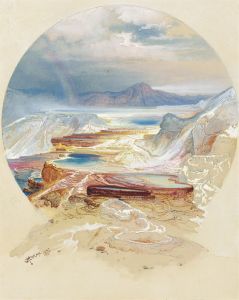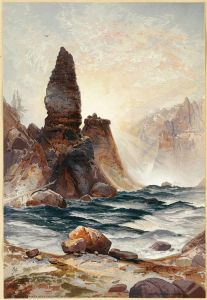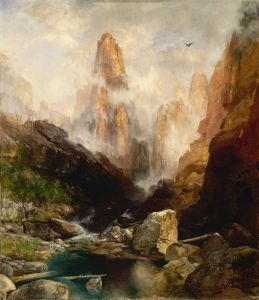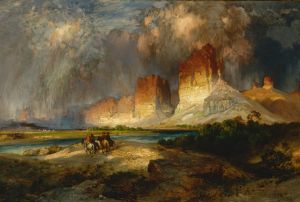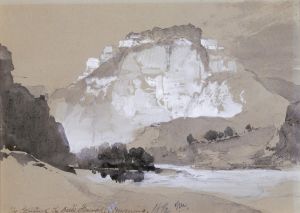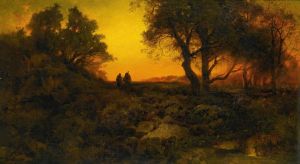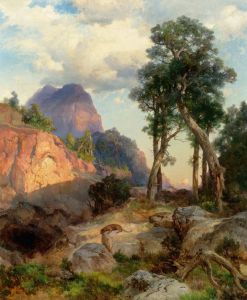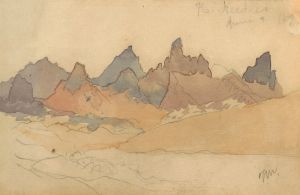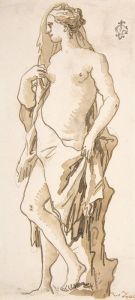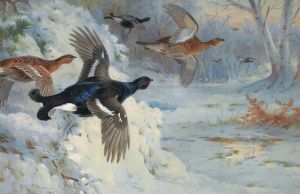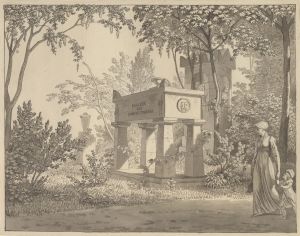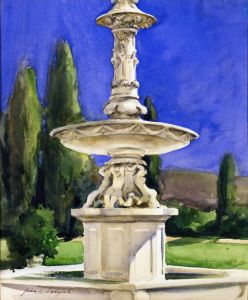
Grand Canyon of the Colorado River
A hand-painted replica of Thomas Moran’s masterpiece Grand Canyon of the Colorado River, meticulously crafted by professional artists to capture the true essence of the original. Each piece is created with museum-quality canvas and rare mineral pigments, carefully painted by experienced artists with delicate brushstrokes and rich, layered colors to perfectly recreate the texture of the original artwork. Unlike machine-printed reproductions, this hand-painted version brings the painting to life, infused with the artist’s emotions and skill in every stroke. Whether for personal collection or home decoration, it instantly elevates the artistic atmosphere of any space.
"Grand Canyon of the Colorado River" is a renowned painting by the American artist Thomas Moran, completed in 1892. Moran, a prominent figure in the Hudson River School of art, is celebrated for his dramatic landscapes that capture the vastness and beauty of the American West. This particular painting is one of his most famous works, depicting the awe-inspiring grandeur of the Grand Canyon, a subject that Moran revisited numerous times throughout his career.
Thomas Moran was born in 1837 in Bolton, England, and immigrated to the United States with his family as a child. He began his artistic career as an illustrator, but his passion for landscape painting soon took precedence. Moran's first encounter with the American West came in 1871 when he joined the Hayden Geological Survey of the Yellowstone region. This expedition profoundly influenced his work, and he became one of the first artists to capture the unique landscapes of the American West, helping to inspire the establishment of Yellowstone as the first national park.
The "Grand Canyon of the Colorado River" painting is a testament to Moran's skill in capturing the sublime beauty of natural landscapes. The painting measures approximately 7 feet by 12 feet, a size that allows viewers to fully immerse themselves in the scene. Moran's use of vivid colors and dramatic contrasts highlights the canyon's rugged terrain, deep shadows, and the interplay of light and atmosphere. The painting portrays the canyon as a majestic and almost otherworldly place, emphasizing its scale and the intricate details of its geological formations.
Moran's work played a significant role in shaping public perception of the American West during the late 19th century. His paintings, including "Grand Canyon of the Colorado River," were instrumental in promoting the idea of preserving these natural wonders. Moran's art was influential in the establishment of several national parks, as his depictions of these landscapes captured the imagination of both the public and policymakers.
The painting is part of the collection at the Smithsonian American Art Museum in Washington, D.C. It remains a significant piece of American art history, reflecting both the natural beauty of the Grand Canyon and the broader cultural movement towards conservation and appreciation of the American wilderness. Moran's ability to convey the vastness and majesty of the canyon continues to inspire viewers and artists alike.
Thomas Moran's legacy as an artist is closely tied to his depictions of the American West, and "Grand Canyon of the Colorado River" stands as a quintessential example of his work. His paintings not only document the landscapes of the time but also evoke a sense of wonder and respect for the natural world that continues to resonate today.





